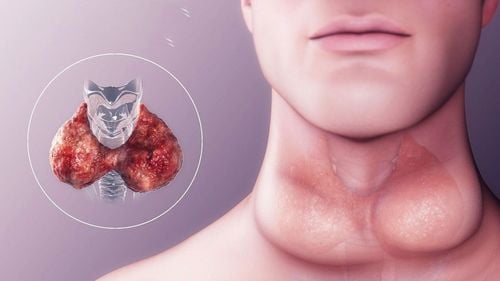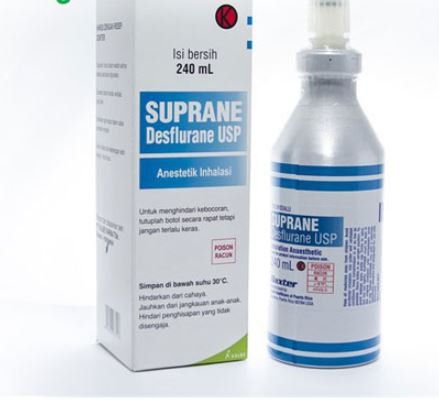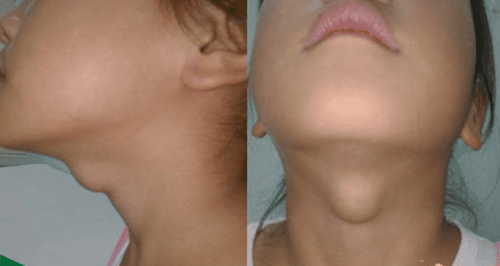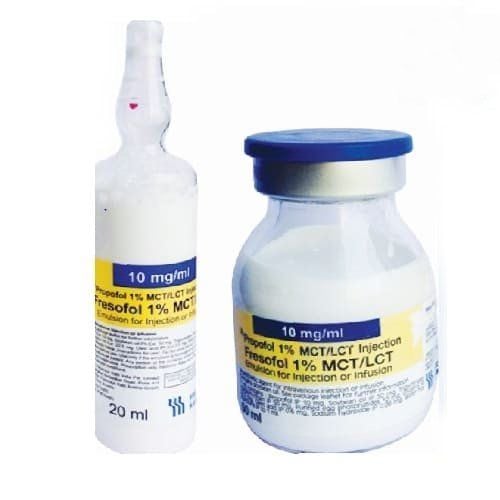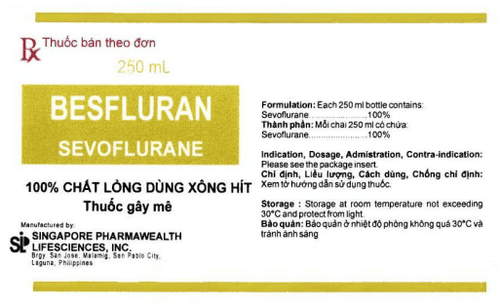This is an automatically translated article.
The article was professionally consulted with Master, Doctor Le Hong Duong - Anesthesiologist - Department of General Surgery & Anesthesia - Vinmec Hai Phong International General Hospital.Endotracheal anesthesia to cut thyroid cysts is a technique of general anesthesia with intubation for the purpose of controlling breathing during surgery and resuscitation after surgery.
1. Indications and contraindications for endotracheal anesthesia to cut thyroid cysts
Endotracheal anesthesia to cut thyroid cysts is a technique of general anesthesia with intubation for the purpose of breathing control during surgery to remove thyroid cysts and to resuscitate after surgery.
Indications in case: Surgery of thyroid and thyroid cysts. Contraindicated in case: The patient does not agree, there are not enough facilities for anesthesia and resuscitation
2. Steps of endotracheal anesthesia to cut thyroid cysts
Step 1: Prepare a system of anesthesia machine with breathing, hand-held oxygen source, vital function monitor, laryngoscope, endotracheal tube of all sizes, suction tube, mask, squeeze ball. ..
Step 2: Pre-anesthesia visit to detect and prevent complications. Simultaneously evaluate difficult endotracheal intubation.

Step 4: Put the patient into a deep sleep with enough muscle relaxation and then intubate.
Open the mouth, insert the laryngoscope to the right side of the mouth, move the tongue to the left, push the lamp deeply, coordinate with the right hand to press the cricoid cartilage to find the epiglottis and glottis. Perform rapid induction of anesthesia and Sellick maneuver in case of full stomach (pressing the cricoid cartilage 20-30kg as soon as the patient loses consciousness until the intubation is complete). Pass the endotracheal tube gently through the glottis, stopping when the balloon of the endotracheal tube passes 2-3 cm through the vocal cords. Gently withdraw the laryngoscope. Endotracheal balloon pump. Check the correct position of the endotracheal tube by auscultation and EtCO2 results Fix the tube with adhesive tape. Place the canul in the mouth to avoid biting the tube (if necessary). Techniques for nasal intubation:
Choose the side of the nasal passage and apply vasoconstrictor drops (naphazoline, otrivine...). Select an endotracheal tube size smaller than that of the oral route. Insert an endotracheal tube lubricated with lidocaine grease through the nostrils Open the mouth, insert the laryngoscope to the right side of the mouth, move the tongue to the left, push the lamp deeply, coordinate with the right hand to press the cricoid cartilage to find the rod cap. glottis and glottis.

Remove the laryngoscope gently Inflate the endotracheal balloon. Check the correct position of the endotracheal tube with auscultation and EtCO2 results Fix the tube with adhesive tape. In case of difficult intubation: Apply difficult intubation procedure.
Maintain anesthesia:
Maintain anesthesia with intravenous or volatile anesthetics, analgesics and muscle relaxants (if needed). Control breathing by machine or hand squeeze. Vinmec International General Hospital with a system of modern facilities, medical equipment and a team of experts and doctors with many years of experience in medical examination and treatment, patients can rest assured to visit. and hospital treatment.
Please dial HOTLINE for more information or register for an appointment HERE. Download MyVinmec app to make appointments faster and to manage your bookings easily.





